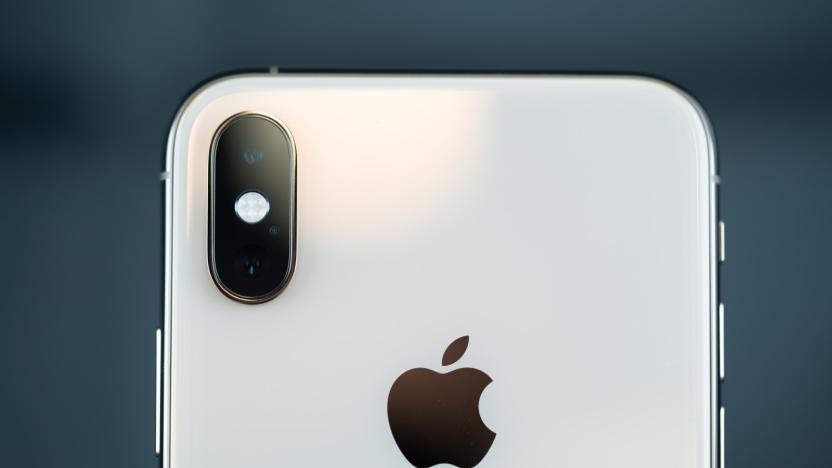laserscanner
Latest

Apple's 2020 iPhones may use laser-assisted 3D cameras
Apple's plans to improve iPhone photography might go well beyond adding a third rear camera. Bloomberg sources say the tech giant is developing a 3D camera system that uses a laser scanner to capture depth information at distances much greater than the dot projection system used in Face ID on current iPhones. Augmented reality is reportedly the main focus, since this would help gauge dimensions, but it would also help with portrait mode photos that currently have to rely on software to detect foreground objects.

See London through the eyes of a self-driving car
When a driverless car glides down the street, avoiding pedestrians and stopping at traffic lights, what exactly does it see? Is the machine's perspective of the world so different to you and me? To give us an inside look, ScanLAB Projects strapped a laser scanner to a Honda CR-V and cruised through the streets of London. Although the car was being driven by a human, the LIDAR (light detection and ranging) equipment performed similarly to how it would in a driverless car. Like radar or sonar, this involves firing a laser in every direction and then measuring the time it takes to reflect back off nearby objects. These timings are then collected, analyzed and collected again to give the car a real-time picture of its surroundings. ScanLAB Projects is a London design company that uses the technology for art and visualisation purposes; they've already scanned museums, an underground railway line and the arctic circle. Its latest video -- produced for the New York Times Magazine -- combines the LIDAR recordings from the drive for a beautiful, eery look at the city.

Laser backpack creates instant 3D maps, Venkman reminds you to not cross the streams (video)
Total protonic reversal? Small price to pay for an instantaneous 3D scan of a building's interior. That's what the backpack pictured above delivers, a project from UC Berkeley students and faculty Matthew Carlberg, Avideh Zakhor, John Kua, and George Chen. The pack contains a suite of laser scanners and positional sensors that enable it to capture images of building interiors as a fleshy assistant roams their halls. Those images can then be automatically pieced back together to create a 3D representation. We're having visions of instant Doom II WADs but the real boon here could be an extension to Google Maps where you could not only get a Street View but also an interior view. You know, really scope out that little Thai joint before you schlep yourself all the way downtown.

L'Artisan Electronique ushers in the era of the virtual pottery wheel (video)
Want to reenact Ghost but don't care for all the messy bits? Let lasers do the work for you. L'Artisan Electronique uses a laser scanner to detect your hand-sculpting gestures, transfers their gently urging instructions over to a computerized 3D model, and -- should your production exhibit sufficient creativity or je ne sais quoi -- prints it out using a 3D ceramic printer. This is part of a Design by Performance exhibition taking place over in Belgium and is seriously one of the cooler things you're going to come across today -- or any other day, for that matter. See it on video after the break.

HeadSLAM helps you navigate imaginary smoke in well-lit corridors
Ever crawl your way through a smoke-filled corridor to save the life of someone trapped in a burning building? If yes, much respect! If no, us neither, but if ever we do hopefully it's after donning this piece of headgear currently under development by two researchers in Germany. Two students (rockers both, no doubt) have created HeadSLAM, a helmet that uses an infrared laser-scanner to penetrate the haze and map out surroundings as its wearer wanders, correcting for inertial disturbances created by the loping, unsteady walk of a bipedal organism, shown in a thrilling demonstration video after the break. It's all very much a prototype at this point (evidenced by the "hardhat festooned with shipping tape" design), and the laptop tether is a bit unwieldy when compared to a cellphone that might manage the same trick from inside a pocket, but within a few years we wouldn't be surprised to see this tech integrated into a trucker hat or maybe even a set of ridiculous headphones. [Warning: PDF read link] [Via NewScientist]


